Managing equine back pain
This common problem in equine patients is often multifactorial, requiring a complete and accurate diagnosis and a multimodal management approach for successful treatment.
Back pain, or pain associated with the thoracolumbar spine and, to some extent, the sacroiliac region, is not uncommon in horses. It is widely accepted that back pain can be primary or secondary to other conditions, especially lameness or neck pathology.
In some instances, back pain may also result from behavioral changes. Therefore, one of the most challenging steps in treating back pain is obtaining an accurate and complete diagnosis that incorporates all the different pathologies involved in the clinical signs so they can be addressed to obtain the best outcome.1
Diagnosis
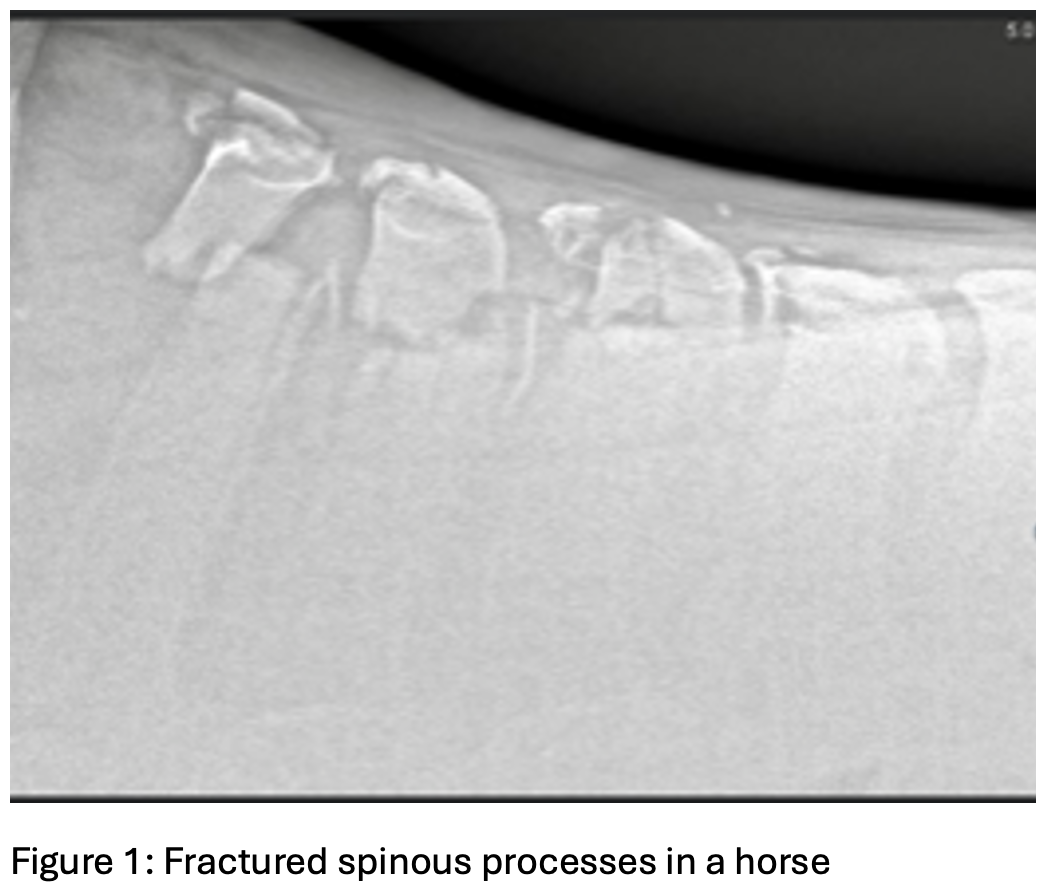
First, a thorough history should be obtained. Common complaints that may lead to investigation of back pain are usually nonspecific and may include reluctance to move forward, bucking under the saddle, refusing to jump, or becoming disunited. It is always important to ask about the signalment and current use of the horse, the onset and duration of the clinical signs, whether there was a specific trigger, what the management/routine for the patient is, and whether any treatment was implemented, and if so, the response. It is also important to ask whether a certified saddle fitter checked the tack; this should also include checking the bridle and bit used on the horse.2
A thorough clinical examination should include visual assessment of the horse’s conformation and muscular distribution, as well as palpation of the neck, back, and limbs, looking for any signs of pain on palpation, decreased/ increased mobility, swelling, or heat. This should be followed by a full orthopedic and ridden assessment to rule out any concurrent lameness that may affect treatment and prognosis. In some cases, a neurological examination may also be needed. A pain scale of 0 to 10 has been established based on the degree of pain, muscle hypertonicity, joint stiffness, and overall functional ability.3
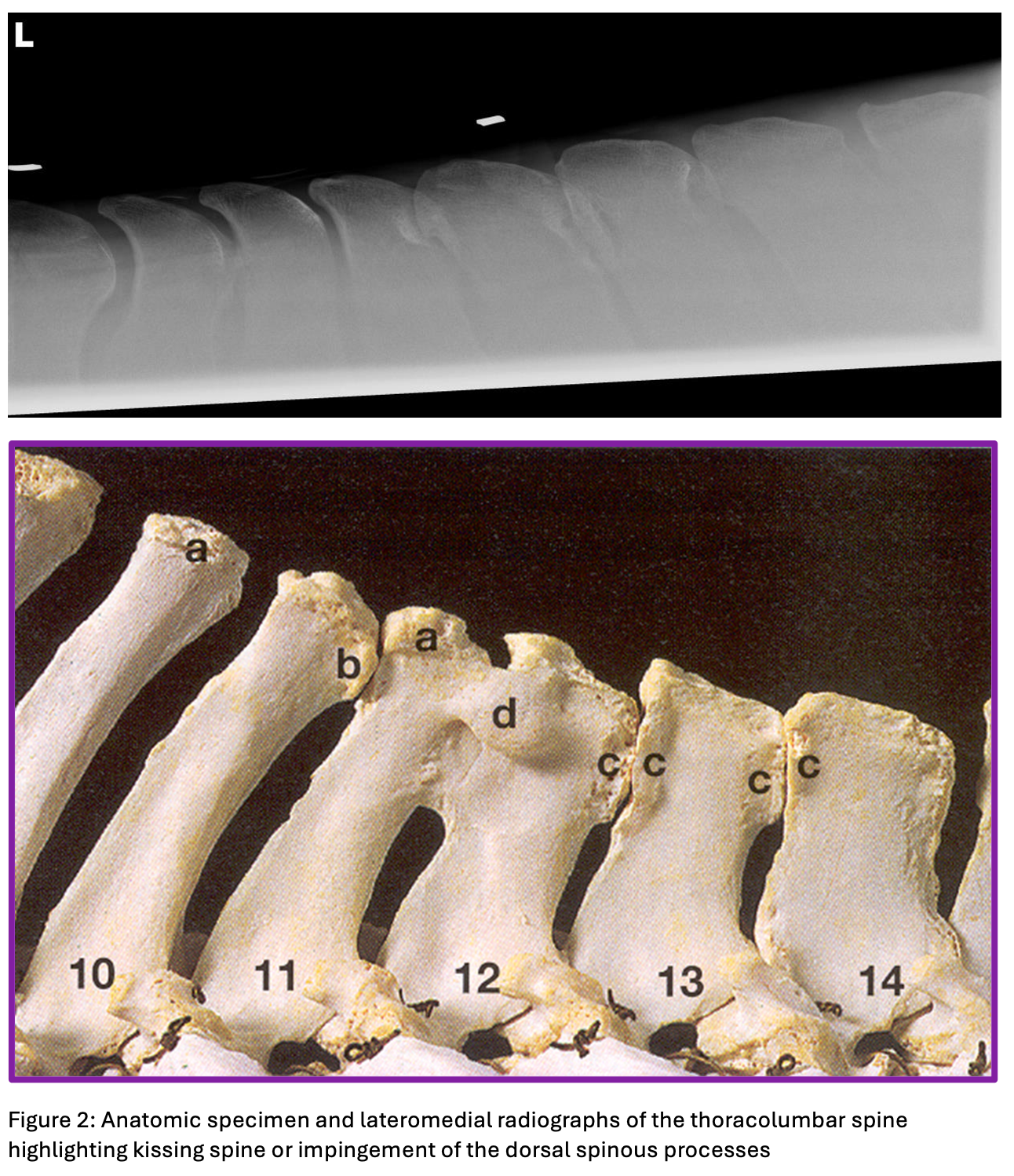
Diagnostic anesthesia remains one of the most important tools for diagnosing the source of the pain, but, similar to the distal limb, careful interpretation should be made depending on the amount of local anesthetic used, the repeatability of the clinical signs, and confounding factors. There may be some false-positive and false-negative results.
Once the source of the pain has been localized, diagnostic imaging can be used to try to obtain a more refined diagnosis. This should include ultrasonography of the back to rule out articular or spinous process pathology and evaluate soft tissues, including the supraspinous ligament and the epaxial musculature.

Radiographs, including lateral views of T2 to L4 and, in some instances, obliques, should also be made to see evidence of fractures (Figure 1) and overriding spinous processes (Figure 2), as well as to evaluate joint facets (Figure 3). Unfortunately, it has recently come to attention that the degree of changes seen on radiographs may not accurately reflect the clinical presentation. Nuclear scintigraphy, especially when associated with radiographs, may increase the sensitivity of back pain diagnosis.4 Finally, the increased availability of advanced diagnostic imaging, such as CT, shows great promise in increasing our diagnostic ability for the pathology of the thoracolumbar and sacroiliac region in the coming years.
Treatment
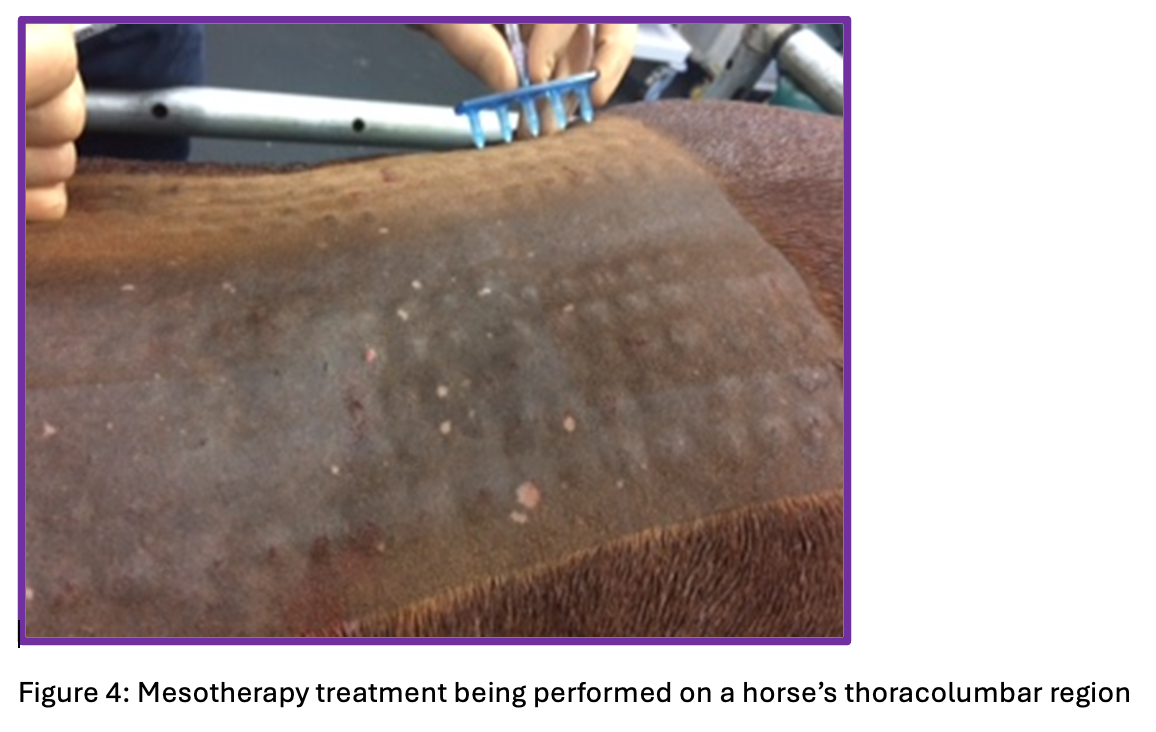
Common osseous causes of thoracolumbar pain in horses include conformational/developmental abnormalities, impinging dorsal spinous processes, osteoarthritis, vertebral fractures, spondylosis, discospondylitis, and spinal neoplasia. Soft tissue causes may include epaxial muscle strain, supraspinous ligament/dorsal sacroiliac strain or desmitis, or exertional rhabdomyolysis. Primary back pain can also be idiopathic, associated with poor tack fitting, or caused by neurologic disorders such as equine protozoal myeloencephalopathy or equine herpesvirus type 1. Treatment will be surgical (Table 1) or medical and guided by the primary problem.
Impingement of the dorsal spinous process can be treated surgically if the clinical signs are attributed to the radiographic changes (clinical signs, diagnostic anesthesia, trial treatment, additional imaging modalities).5,6 Surgical treatment for impinging dorsal processes was first described in 1968,7 and since then, the technique has evolved. Currently, surgical procedures commonly offered to clients are cranial or caudal resection of the affected spinous processes or interspinous ligament desmotomy.8-10 A minimally invasive technique for resecting the cranial aspect of the affected spinous process has also been described recently.9
The main consideration when choosing a surgical technique is the extent and severity of the lesion. Unless they are minimally invasive, ostectomies involve a large incision of the midline and therefore are associated with a longer recovery time and rehabilitation period. Preference has recently been given to more minimally invasive techniques, such as interspinous ligament desmotomy, when possible, which may decrease the recovery time and improve long-term prognosis (Table 2).11-13
Medication of the joint facets, the interspinous region, or mesotherapy (Figure 4) of the thoracolumbar region can be performed to relax the epaxial musculature, both as a treatment and a trial diagnosis. Additionally, rehabilitation modalities such as shockwave therapy, laser therapy, kinesio tape, active mobilization, water treadmill, elastic resistance bands/training aids, dynamic mobilization exercises, or functional electrical stimulation have been incorporated in the treatment and rehabilitation of patients with back pain. They can be used as sole treatment modalities and rehabilitation tools following surgical treatment, as well as for maintaining back health, especially in sports horses. Back pain is usually best addressed and treated using a multimodal approach.14-23
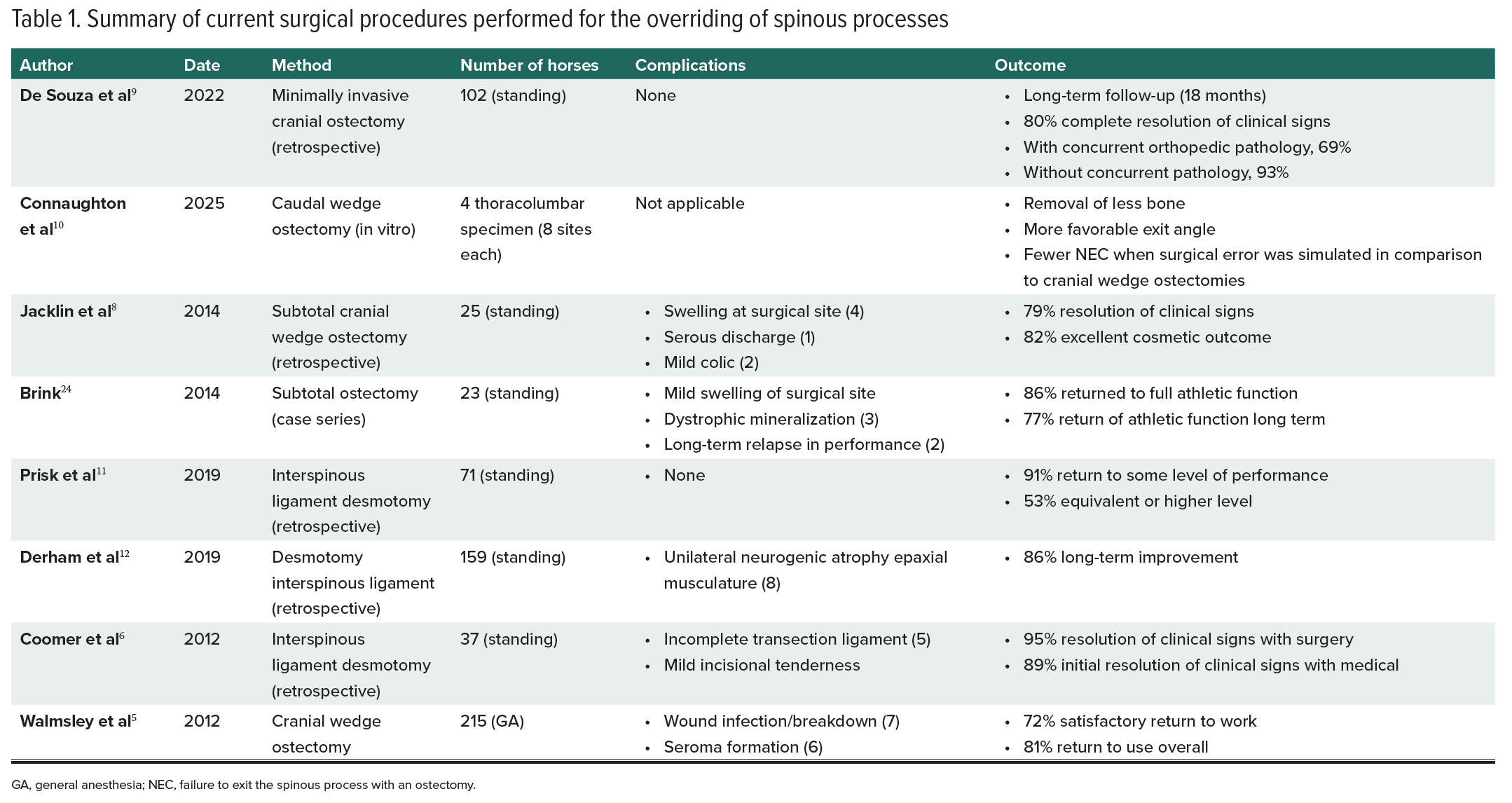
Conclusion
Back pain is a commonly recognized problem in equine patients that is often multifactorial and can be a serious cause of poor performance in horses. Successful management of horses with back pain starts with obtaining a complete and accurate diagnosis, and treatment relies on a multimodal approach that should include all parties involved, including the veterinarian, owner, trainers, rider, physiotherapist, and farrier.
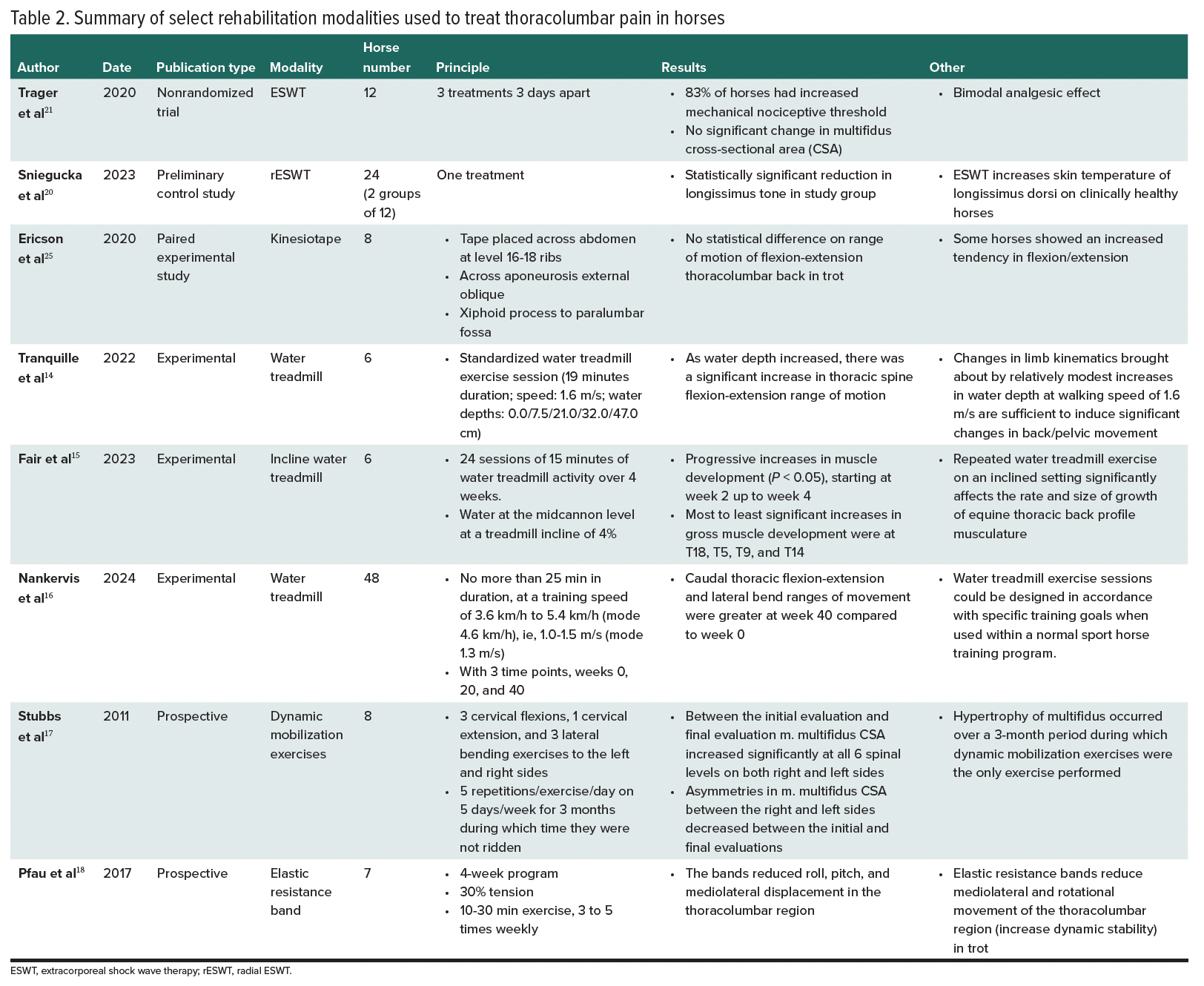
REFERENCES
- Marshall-Gibson ME, Durham MG, Seabaugh KA, Moorman VJ, Ferris DJ. Survey of equine veterinarians regarding primary equine back pain in the United States. Front Vet Sci. 2023;10:1224605. doi:10.3389/fvets.2023.1224605
- Shokry M, Ali LB, El-Sharkawy M. Relationship between back pain and poor performance in show jumping athletic horses. Open Vet J. 2025;15(3):1480-1487. doi:10.5455/OVJ.2025.v15.i3.37
- Mayaki AM, Abdul Razak IS, Adzahan NM, Mazlan M, Rasedee A. Clinical assessment and grading of back pain in horses. J Vet Sci. 2020;21(6):e82. doi:10.4142/jvs.2020.21.e82
- Domańska-Kruppa N, Wierzbicka M, Stefanik E. Advances in the clinical diagnostics to equine back pain: a review of imaging and functional modalities. Animals (Basel). 2024;14(5):698. doi:10.3390/ani14050698
- Walmsley JP, Pettersson H, Winberg F, McEvoy F. Impingement of the dorsal spinous processes in two hundred and fifteen horses: case selection, surgical technique and results. Equine Vet J. 2002;34(1):23-28. doi:10.2746/042516402776181259
- Coomer RP, McKane SA, Smith N, Vandeweerd JM. A controlled study evaluating a novel surgical treatment for kissing spines in standing sedated horses. Vet Surg. 2012;41(7):890-897. doi:10.1111/j.1532-950X.2012.01013.x
- Jeffcott LB, Hickman J. The treatment of horses with chronic back pain by resecting the summits of the impinging dorsal spinous processes. Equine Vet J. 1975;7(3):115-119. doi:10.1111/j.2042-3306.1975.tb03245.x
- Jacklin BD, Minshall GJ, Wright IM. A new technique for subtotal (cranial wedge) ostectomy in the treatment of impinging/overriding spinous processes: description of technique and outcome of 25 cases. Equine Vet J. 2014;46(3):339-344. doi:10.1111/evj.12215
- de Souza TC, Crowe OM, Bowles D, Poore LA, Suthers JM. Minimally invasive cranial ostectomy for the treatment of impinging dorsal spinous processes in 102 standing horses. Vet Surg. 2022;51(suppl 1):O60-O68. doi:10.1111/vsu.13736
- Connaughton MT, MacDonald EJ, Ireland JL, Rocchigiani G, Stack JD. Experimental comparison of caudal wedge ostectomy to cranial wedge ostectomy for surgical treatment of overriding/impinging spinous processes in horses. Equine Vet J. 2025;57(5):1395-1404. doi:10.1111/evj.14498
- Prisk AJ, García-López JM. Long-term prognosis for return to athletic function after interspinous ligament desmotomy for treatment of impinging and overriding dorsal spinous processes in horses: 71 cases (2012-2017). Vet Surg. 2019;48(7):1278-1286. doi:10.1111/vsu.13298
- Derham AM, O’Leary JM, Connolly SE, Schumacher J, Kelly G. Performance comparison of 159 thoroughbred racehorses and matched cohorts before and after desmotomy of the interspinous ligament. Vet J. 2019;249:16-23. doi:10.1016/j.tvjl.2019.05.004
- Sayers E, Tabor G. An exploration of clinical reasoning and practices used by physiotherapists in the rehabilitation of horses following interspinous ligament desmotomy surgery. Physiother Theory Pract. 2022;38(7):897-907. doi:10.1080/09593985.2020.1809044
- Tranquille C, Tacey J, Walker V, et al. Effect of water depth on limb and back kinematics in horses walking on a water treadmill. J Equine Vet Sci. 2022;115:104025. doi:10.1016/j.jevs.2022.104025
- Fair N, Blake S, Blake R. Four weeks of incline water treadmill exercise can contribute to increase epaxial muscle profile in horses. Vet Med Int. 2023;2023:9090406. doi:10.1155/2023/9090406
- Nankervis K, Tranquille C, Tacey J, et al. Kinematic responses to water treadmill exercise when used regularly within a sport horse training programme: a longitudinal, observational study. Animals (Basel). 2024;14(16):2393. doi:10.3390/ani14162393
- Stubbs NC, Kaiser LJ, Hauptman J, Clayton HM. Dynamic mobilisation exercises increase cross sectional area of musculus multifidus. Equine Vet J. 2011;43(5):522-529. doi:10.1111/j.2042-3306.2010.00322.x
- Pfau T, Simons V, Rombach N, Stubbs N, Weller R. Effect of a 4-week elastic resistance band training regimen on back kinematics in horses trotting in-hand and on the lunge. Equine Vet J. 2017;49(6):829-835. doi:10.1111/evj.12690
- Zielińska P, Soroko-Dubrovina M, Dudek K, Ruzhanova-Gospodinova IS. A preliminary study of the influence of high intensity laser therapy (HILT) on skin surface temperature and longissimus dorsi muscle tone changes in thoroughbred racehorses with back pain. Animals (Basel). 2023;13(5):794. doi:10.3390/ani13050794
- Śniegucka K, Soroko-Dubrovina M, Zielińska P, Dudek K, Žuffová K. The effect of radial extracorporeal shock wave therapy (rESWT) on the skin surface temperature of the longissimus dorsi muscle in clinically healthy racing thoroughbreds: a preliminary study. Animals (Basel). 2023;13(12):2028. doi:10.3390/ani13122028
- Trager LR, Funk RA, Clapp KS, et al. Extracorporeal shockwave therapy raises mechanical nociceptive threshold in horses with thoracolumbar pain. Equine Vet J. 2020;52(2):250-257. doi:10.1111/evj.13159
- de Melo UP, Ferreira C. Multimodal therapy for treatment of equine back pain: a report of 15 cases. Braz J Vet Med. 2021;43:e003321. doi:10.29374/2527-2179.bjvm003321
- Caure S, Dendauw P, Thesee L, et al. Effects of different shoeing conditions on equine cervical and back kinematics during walking and trotting on a soft surface. J Equine Vet Sci. 2024;142:105194. doi:10.1016/j.jevs.2024.105194
- Brink P. Subtotal ostectomy of impinging dorsal spinous processes in 23 standing horses. Vet Surg. 2014;43(1):95-98. doi:10.1111/j.1532-950X.2013.12078.x
- Ericson C, Stenfeldt P, Hardeman A, Jacobson I. The effect of kinesiotape on flexion-extension of the thoracolumbar back in horses at trot. Animals (Basel). 2020;10(2):301. doi:10.3390/ani10020301